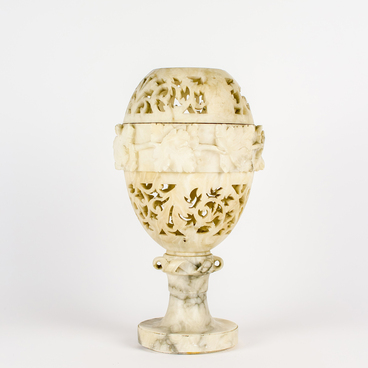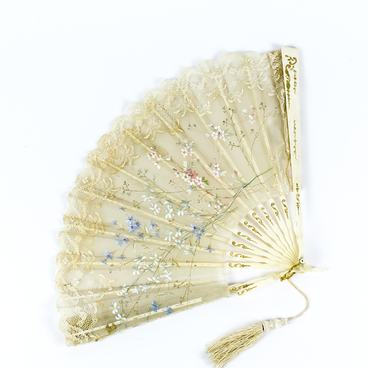Until 1917, this fruit vase belonged to one of the Tetyushi merchant families. After the nationalization of merchant property in the early 1920s, the workers and peasants’ militia donated the vase to the Tetyushi local history museum.
The cast metal vase was made at the Roman Plewkiewicz factory in Warsaw. In the center, there are sculptural images of a woman and a boy and on the sides — there are two bowls in the form of wide leaves. The trademark of the factory has been preserved on the bottom.
The factory of silver-plated and gilded objects “Roman Plewkiewicz & Co” was founded in Warsaw in 1886. It became a subsidiary of the well-known German company “Wurttembergische Metallwaren Fabrik”, established in 1853.
The founder of the company was Daniel Straub, an entrepreneur from the city of Gailingen am Hochrhein in the kingdom of Württemberg in southwestern Germany. He owned a small workshop for the repair of metal products, and in 1850, he opened a steelmaking factory for the manufacture of metal structures and turbines. At the same time, he received a contract for the production of parts for the large construction of the Geislingen Railway. In 1853, Straub decided to join the Schweizer Brothers. Together, they formed a company that began the production of silver-plated products.
Roman Plewkiewicz’s factory produced inexpensive art nouveau crockery and interior items made of silver-plated and gilded copper alloys. Silver-plated dishes, decorated with engravings, cast mascarons (decorative masks), and garlands, were very popular in the late 19th and early 20th centuries and was often advertised.
The Art Nouveau style has been developing from the late 19th century until the beginning of the First World War. The main idea of the artists and architects of this period was the search for the harmony of art in the industrial era.
Initially, at the Plewkiewicz’s factory, only metal products brought from Germany were silver-plated. Beginning from 1890, the manufacturer established his production of fashionable silver-plated tableware with colored glass inserts. In 1900, after Plewkiewicz’s resignation, the company was transformed into a joint-stock company, which existed until the outbreak of the First World War.
The cast metal vase was made at the Roman Plewkiewicz factory in Warsaw. In the center, there are sculptural images of a woman and a boy and on the sides — there are two bowls in the form of wide leaves. The trademark of the factory has been preserved on the bottom.
The factory of silver-plated and gilded objects “Roman Plewkiewicz & Co” was founded in Warsaw in 1886. It became a subsidiary of the well-known German company “Wurttembergische Metallwaren Fabrik”, established in 1853.
The founder of the company was Daniel Straub, an entrepreneur from the city of Gailingen am Hochrhein in the kingdom of Württemberg in southwestern Germany. He owned a small workshop for the repair of metal products, and in 1850, he opened a steelmaking factory for the manufacture of metal structures and turbines. At the same time, he received a contract for the production of parts for the large construction of the Geislingen Railway. In 1853, Straub decided to join the Schweizer Brothers. Together, they formed a company that began the production of silver-plated products.
Roman Plewkiewicz’s factory produced inexpensive art nouveau crockery and interior items made of silver-plated and gilded copper alloys. Silver-plated dishes, decorated with engravings, cast mascarons (decorative masks), and garlands, were very popular in the late 19th and early 20th centuries and was often advertised.
The Art Nouveau style has been developing from the late 19th century until the beginning of the First World War. The main idea of the artists and architects of this period was the search for the harmony of art in the industrial era.
Initially, at the Plewkiewicz’s factory, only metal products brought from Germany were silver-plated. Beginning from 1890, the manufacturer established his production of fashionable silver-plated tableware with colored glass inserts. In 1900, after Plewkiewicz’s resignation, the company was transformed into a joint-stock company, which existed until the outbreak of the First World War.



